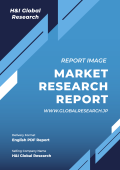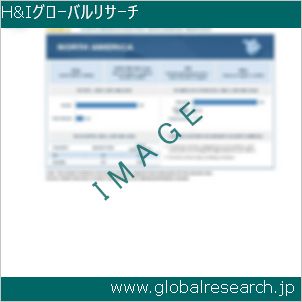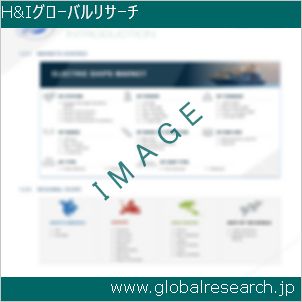1 Scope of the Report
1.1 Market Introduction
1.2 Years Considered
1.3 Research Objectives
1.4 Market Research Methodology
1.5 Research Process and Data Source
1.6 Economic Indicators
1.7 Currency Considered
1.8 Market Estimation Caveats
2 Executive Summary
2.1 World Market Overview
2.1.1 Global Wearable Physiological Sensors Annual Sales 2018-2029
2.1.2 World Current & Future Analysis for Wearable Physiological Sensors by Geographic Region, 2018, 2022 & 2029
2.1.3 World Current & Future Analysis for Wearable Physiological Sensors by Country/Region, 2018, 2022 & 2029
2.2 Wearable Physiological Sensors Segment by Type
2.2.1 Fitness Tracker
2.2.2 Smart Watch
2.2.3 Others
2.3 Wearable Physiological Sensors Sales by Type
2.3.1 Global Wearable Physiological Sensors Sales Market Share by Type (2018-2023)
2.3.2 Global Wearable Physiological Sensors Revenue and Market Share by Type (2018-2023)
2.3.3 Global Wearable Physiological Sensors Sale Price by Type (2018-2023)
2.4 Wearable Physiological Sensors Segment by Application
2.4.1 Diagnostic Markers
2.4.2 Preventive Medicine
2.4.3 Others
2.5 Wearable Physiological Sensors Sales by Application
2.5.1 Global Wearable Physiological Sensors Sale Market Share by Application (2018-2023)
2.5.2 Global Wearable Physiological Sensors Revenue and Market Share by Application (2018-2023)
2.5.3 Global Wearable Physiological Sensors Sale Price by Application (2018-2023)
3 Global Wearable Physiological Sensors by Company
3.1 Global Wearable Physiological Sensors Breakdown Data by Company
3.1.1 Global Wearable Physiological Sensors Annual Sales by Company (2018-2023)
3.1.2 Global Wearable Physiological Sensors Sales Market Share by Company (2018-2023)
3.2 Global Wearable Physiological Sensors Annual Revenue by Company (2018-2023)
3.2.1 Global Wearable Physiological Sensors Revenue by Company (2018-2023)
3.2.2 Global Wearable Physiological Sensors Revenue Market Share by Company (2018-2023)
3.3 Global Wearable Physiological Sensors Sale Price by Company
3.4 Key Manufacturers Wearable Physiological Sensors Producing Area Distribution, Sales Area, Product Type
3.4.1 Key Manufacturers Wearable Physiological Sensors Product Location Distribution
3.4.2 Players Wearable Physiological Sensors Products Offered
3.5 Market Concentration Rate Analysis
3.5.1 Competition Landscape Analysis
3.5.2 Concentration Ratio (CR3, CR5 and CR10) & (2018-2023)
3.6 New Products and Potential Entrants
3.7 Mergers & Acquisitions, Expansion
4 World Historic Review for Wearable Physiological Sensors by Geographic Region
4.1 World Historic Wearable Physiological Sensors Market Size by Geographic Region (2018-2023)
4.1.1 Global Wearable Physiological Sensors Annual Sales by Geographic Region (2018-2023)
4.1.2 Global Wearable Physiological Sensors Annual Revenue by Geographic Region (2018-2023)
4.2 World Historic Wearable Physiological Sensors Market Size by Country/Region (2018-2023)
4.2.1 Global Wearable Physiological Sensors Annual Sales by Country/Region (2018-2023)
4.2.2 Global Wearable Physiological Sensors Annual Revenue by Country/Region (2018-2023)
4.3 Americas Wearable Physiological Sensors Sales Growth
4.4 APAC Wearable Physiological Sensors Sales Growth
4.5 Europe Wearable Physiological Sensors Sales Growth
4.6 Middle East & Africa Wearable Physiological Sensors Sales Growth
5 Americas
5.1 Americas Wearable Physiological Sensors Sales by Country
5.1.1 Americas Wearable Physiological Sensors Sales by Country (2018-2023)
5.1.2 Americas Wearable Physiological Sensors Revenue by Country (2018-2023)
5.2 Americas Wearable Physiological Sensors Sales by Type
5.3 Americas Wearable Physiological Sensors Sales by Application
5.4 United States
5.5 Canada
5.6 Mexico
5.7 Brazil
6 APAC
6.1 APAC Wearable Physiological Sensors Sales by Region
6.1.1 APAC Wearable Physiological Sensors Sales by Region (2018-2023)
6.1.2 APAC Wearable Physiological Sensors Revenue by Region (2018-2023)
6.2 APAC Wearable Physiological Sensors Sales by Type
6.3 APAC Wearable Physiological Sensors Sales by Application
6.4 China
6.5 Japan
6.6 South Korea
6.7 Southeast Asia
6.8 India
6.9 Australia
6.10 China Taiwan
7 Europe
7.1 Europe Wearable Physiological Sensors by Country
7.1.1 Europe Wearable Physiological Sensors Sales by Country (2018-2023)
7.1.2 Europe Wearable Physiological Sensors Revenue by Country (2018-2023)
7.2 Europe Wearable Physiological Sensors Sales by Type
7.3 Europe Wearable Physiological Sensors Sales by Application
7.4 Germany
7.5 France
7.6 UK
7.7 Italy
7.8 Russia
8 Middle East & Africa
8.1 Middle East & Africa Wearable Physiological Sensors by Country
8.1.1 Middle East & Africa Wearable Physiological Sensors Sales by Country (2018-2023)
8.1.2 Middle East & Africa Wearable Physiological Sensors Revenue by Country (2018-2023)
8.2 Middle East & Africa Wearable Physiological Sensors Sales by Type
8.3 Middle East & Africa Wearable Physiological Sensors Sales by Application
8.4 Egypt
8.5 South Africa
8.6 Israel
8.7 Turkey
8.8 GCC Countries
9 Market Drivers, Challenges and Trends
9.1 Market Drivers & Growth Opportunities
9.2 Market Challenges & Risks
9.3 Industry Trends
10 Manufacturing Cost Structure Analysis
10.1 Raw Material and Suppliers
10.2 Manufacturing Cost Structure Analysis of Wearable Physiological Sensors
10.3 Manufacturing Process Analysis of Wearable Physiological Sensors
10.4 Industry Chain Structure of Wearable Physiological Sensors
11 Marketing, Distributors and Customer
11.1 Sales Channel
11.1.1 Direct Channels
11.1.2 Indirect Channels
11.2 Wearable Physiological Sensors Distributors
11.3 Wearable Physiological Sensors Customer
12 World Forecast Review for Wearable Physiological Sensors by Geographic Region
12.1 Global Wearable Physiological Sensors Market Size Forecast by Region
12.1.1 Global Wearable Physiological Sensors Forecast by Region (2024-2029)
12.1.2 Global Wearable Physiological Sensors Annual Revenue Forecast by Region (2024-2029)
12.2 Americas Forecast by Country
12.3 APAC Forecast by Region
12.4 Europe Forecast by Country
12.5 Middle East & Africa Forecast by Country
12.6 Global Wearable Physiological Sensors Forecast by Type
12.7 Global Wearable Physiological Sensors Forecast by Application
13 Key Players Analysis
13.1 Cardinal Health
13.1.1 Cardinal Health Company Information
13.1.2 Cardinal Health Wearable Physiological Sensors Product Portfolios and Specifications
13.1.3 Cardinal Health Wearable Physiological Sensors Sales, Revenue, Price and Gross Margin (2018-2023)
13.1.4 Cardinal Health Main Business Overview
13.1.5 Cardinal Health Latest Developments
13.2 Ekso Bionics Holdings
13.2.1 Ekso Bionics Holdings Company Information
13.2.2 Ekso Bionics Holdings Wearable Physiological Sensors Product Portfolios and Specifications
13.2.3 Ekso Bionics Holdings Wearable Physiological Sensors Sales, Revenue, Price and Gross Margin (2018-2023)
13.2.4 Ekso Bionics Holdings Main Business Overview
13.2.5 Ekso Bionics Holdings Latest Developments
13.3 Samsung
13.3.1 Samsung Company Information
13.3.2 Samsung Wearable Physiological Sensors Product Portfolios and Specifications
13.3.3 Samsung Wearable Physiological Sensors Sales, Revenue, Price and Gross Margin (2018-2023)
13.3.4 Samsung Main Business Overview
13.3.5 Samsung Latest Developments
13.4 Asahi Kasei
13.4.1 Asahi Kasei Company Information
13.4.2 Asahi Kasei Wearable Physiological Sensors Product Portfolios and Specifications
13.4.3 Asahi Kasei Wearable Physiological Sensors Sales, Revenue, Price and Gross Margin (2018-2023)
13.4.4 Asahi Kasei Main Business Overview
13.4.5 Asahi Kasei Latest Developments
13.5 Omron
13.5.1 Omron Company Information
13.5.2 Omron Wearable Physiological Sensors Product Portfolios and Specifications
13.5.3 Omron Wearable Physiological Sensors Sales, Revenue, Price and Gross Margin (2018-2023)
13.5.4 Omron Main Business Overview
13.5.5 Omron Latest Developments
13.6 Nike
13.6.1 Nike Company Information
13.6.2 Nike Wearable Physiological Sensors Product Portfolios and Specifications
13.6.3 Nike Wearable Physiological Sensors Sales, Revenue, Price and Gross Margin (2018-2023)
13.6.4 Nike Main Business Overview
13.6.5 Nike Latest Developments
13.7 Apple
13.7.1 Apple Company Information
13.7.2 Apple Wearable Physiological Sensors Product Portfolios and Specifications
13.7.3 Apple Wearable Physiological Sensors Sales, Revenue, Price and Gross Margin (2018-2023)
13.7.4 Apple Main Business Overview
13.7.5 Apple Latest Developments
13.8 Cyberdyne
13.8.1 Cyberdyne Company Information
13.8.2 Cyberdyne Wearable Physiological Sensors Product Portfolios and Specifications
13.8.3 Cyberdyne Wearable Physiological Sensors Sales, Revenue, Price and Gross Margin (2018-2023)
13.8.4 Cyberdyne Main Business Overview
13.8.5 Cyberdyne Latest Developments
14 Research Findings and Conclusion
❖ 免責事項 ❖
http://www.globalresearch.jp/disclaimer


